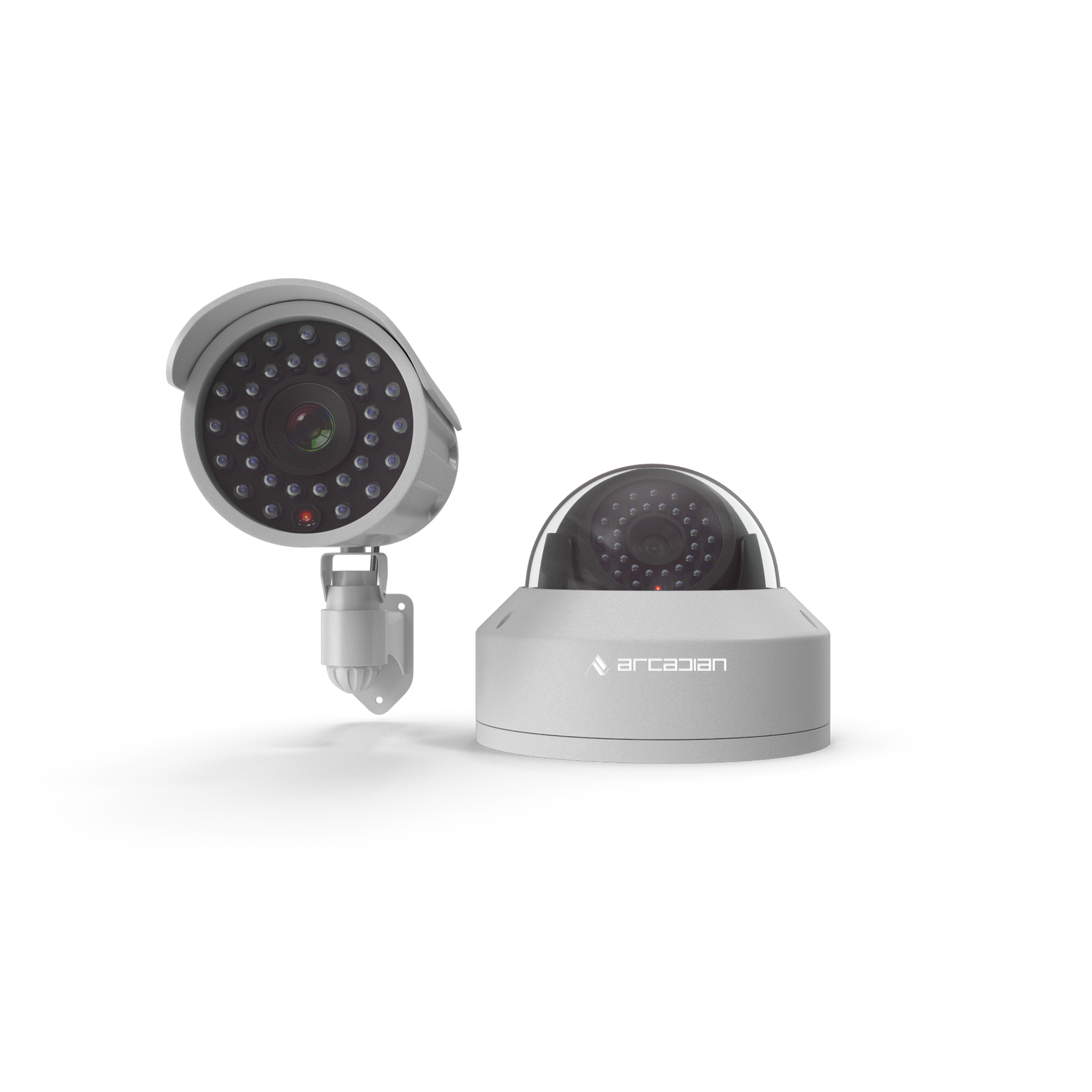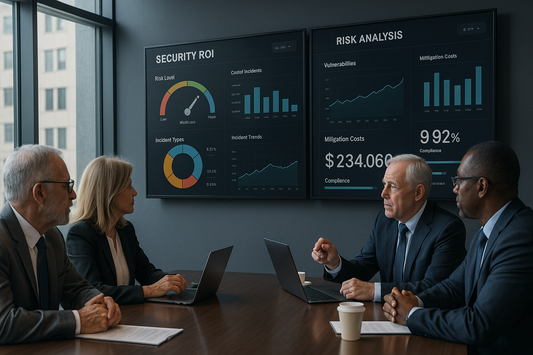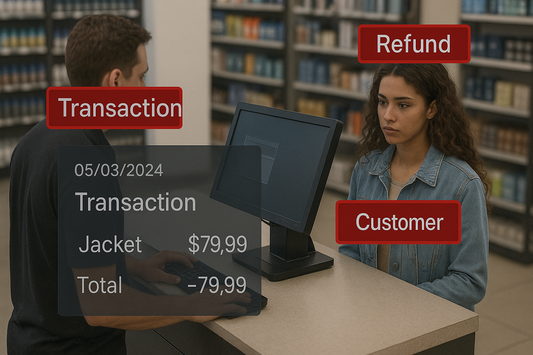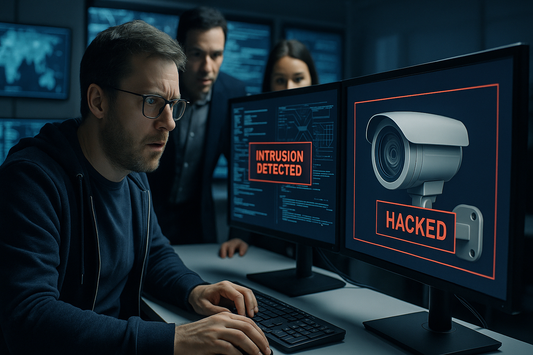Top 10 Most Dangerous Cities in the USA (2025): What the Crime Data Tells Us
Violent crime in U.S. cities is reshaping how retailers, property managers, and enterprises think about safety. Here are the 10 most dangerous cities in America — and what the crime data means for business leaders who need to act now.
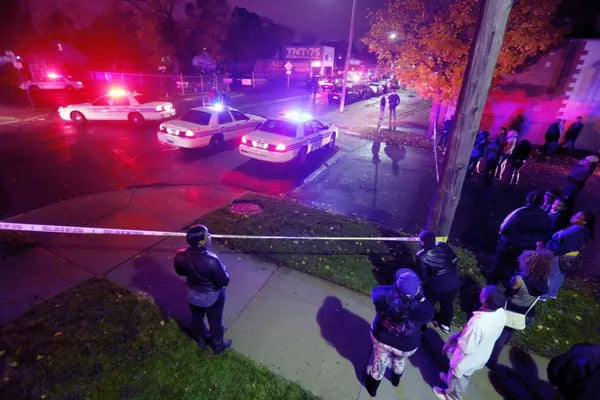
Introduction
The United States is facing a crime paradox in 2025. FBI Uniform Crime Reporting (UCR) data shows property crime declined slightly in 2024, but violent crime in major metropolitan areas rose sharply — up to 12% in some cities year over year. That translates into more assaults, homicides, and organized retail crime events in urban centers that are already struggling with police staffing shortages and budget constraints.
For retailers like Walmart, Walgreens, and Target, these numbers aren’t abstract statistics — they’re daily operational risks. For city officials in St. Louis, Detroit, or Baltimore, crime rates aren’t just headlines, they define community reputation and economic viability. And for businesses using outdated surveillance — legacy NVRs, static VMS, and half-baked VSaaS offerings from competitors like Verkada or Eagle Eye Networks — the reality is clear: static systems can’t keep up with dynamic crime patterns.
ArcadianAI and our AI assistant Ranger were built for this world. Unlike old systems, Ranger adapts to local environments, filters out false alarms, and delivers actionable intelligence that helps enterprises, schools, and property managers operate safely in America’s most dangerous cities.
This report dives into the Top 10 Most Dangerous Cities in the U.S. for 2025, based on FBI, Statista, and BJS crime data — and explains what executives need to know about securing operations in each.
Quick Summary / Key Takeaways
-
St. Louis, Detroit, and Baltimore lead the nation in violent crime rates.
-
Organized retail crime surges in Oakland, Philadelphia, and New Orleans.
-
Property crimes are declining nationally, but assaults and homicides are rising.
-
Legacy surveillance platforms fail in high-crime metro environments.
-
ArcadianAI Ranger adapts city by city, reducing false alarms and enabling real-time response.
Background & Relevance
Why does this matter now? Because 2025 is shaping up to be one of the most volatile years for U.S. crime in over a decade.
-
According to FBI 2024 preliminary data, violent crime rose in 28 of the 50 largest U.S. metro areas, with St. Louis, Detroit, and Memphis seeing some of the steepest per-capita increases.
-
Retail shrinkage tied to organized retail crime (ORC) cost U.S. retailers an estimated $121 billion in 2024 (National Retail Federation, 2025).
-
Police departments in Baltimore, Oakland, and New Orleans report staffing shortages of 20–30%, leaving businesses and communities to rely more heavily on private security.
This is why security executives can no longer depend on reactive models:
-
NVR-centric deployments only tell you what happened after the fact.
-
Legacy VMS platforms (Genetec, Milestone) rely on manual monitoring that doesn’t scale.
-
Cloud VSaaS competitors like Verkada or Rhombus push “simplicity,” but ignore the reality that high-crime cities require adaptive intelligence, not just video feeds in the cloud.
ArcadianAI Ranger is built to read environments differently. It doesn’t just detect motion — it interprets context, adapts to noise, and integrates with guard companies, video monitoring centers, and first responders. For cities where every second matters, this difference is survival.
Core Topic Exploration
How U.S. Crime Rankings Are Measured
Most rankings are based on violent crime rate per 100,000 residents, including homicide, rape, robbery, and aggravated assault. Secondary factors include property crime, motor vehicle theft, and arson. We use FBI UCR, BJS reports, and Statista data to determine the most dangerous cities in the U.S. for 2025.
The Top 10 Most Dangerous Cities in the USA (2025)
1. St. Louis, Missouri
-
Violent Crime Rate: ~1,860 per 100,000 (FBI 2024)
-
Homicide Rate: Among the nation’s highest per capita
-
Trends: Gun violence concentrated in northside neighborhoods; carjackings spiking downtown
-
Industries Impacted: Retail, hospitality, education
-
Case Study: A downtown St. Louis Walmart closed after repeated thefts and violent incidents in 2024.
-
Why Legacy Systems Fail: Static cameras overwhelmed by constant motion + false alarms
-
ArcadianAI Advantage: Ranger filters noise, detects weapons, and integrates with local monitoring partners for real-time incident response.
2. Detroit, Michigan
-
Violent Crime Rate: ~1,450 per 100,000
-
Key Issues: Gang-related activity, retail theft, rising assaults
-
Industries: Automotive dealerships, retail, manufacturing plants
-
Case Study: ORC gangs repeatedly targeted Detroit CVS and Walgreens chains in late 2024.
-
ArcadianAI Role: Ranger detects coordinated group theft patterns across multiple cameras in real time.
3. Baltimore, Maryland
-
Violent Crime Rate: ~1,300 per 100,000
-
Challenges: Police staffing shortages, persistent gun crime
-
Industries: Healthcare (Johns Hopkins), universities, retail
-
Case Study: High-profile robberies in Harbor East shopping district
-
Ranger Solution: AI as a guard layer for multi-location retail and university campuses
4. Memphis, Tennessee
-
Violent Crime Rate: ~1,290 per 100,000
-
Trends: Carjackings, assaults, and retail theft
-
Notable Incident: Kroger stores in Memphis experienced a string of violent robberies in 2024.
-
ArcadianAI Value: Real-time AI alerts detect weapons and abnormal loitering at parking lots.
5. Cleveland, Ohio
-
Violent Crime Rate: ~1,250 per 100,000
-
Key Issues: Gun violence and property crime
-
Industries: Retail, real estate, warehousing
-
ArcadianAI Use Case: Ranger flags suspicious “tool-in-hand” behaviors in warehouse perimeters.
6. Oakland, California
-
Violent Crime Rate: ~1,200 per 100,000
-
Trend: Organized retail crime epidemic — Home Depot, Macy’s, and Walgreens hit repeatedly
-
Case Study: $300,000 theft from an Oakland Nordstrom in 2024
-
ArcadianAI Edge: AI alerts guard companies only when verified theft patterns are detected, cutting false dispatches.
7. Albuquerque, New Mexico
-
Violent Crime Rate: ~1,180 per 100,000
-
Trends: Property crime and violent assaults remain persistently high
-
ArcadianAI Solution: Ranger adapts to suburban retail centers and urban transit hubs, reducing false positives in mixed environments.
8. Milwaukee, Wisconsin
-
Violent Crime Rate: ~1,170 per 100,000
-
Key Issues: Rising assaults, retail theft, gang activity
-
ArcadianAI Role: Ranger enhances mall and shopping center security with adaptive AI that recognizes loitering, group theft behavior, and night-time anomalies.
9. New Orleans, Louisiana
-
Violent Crime Rate: ~1,160 per 100,000
-
Trends: Nightlife violence, tourist theft, and assaults
-
Case Study: French Quarter shootings in late 2024 raised national concerns.
-
ArcadianAI Role: Low-light adaptive analytics ensure night environments are monitored without false positives.
10. Philadelphia, Pennsylvania
-
Violent Crime Rate: ~1,110 per 100,000
-
Trends: Retail shrinkage, gun violence, assaults in transit hubs
-
Case Study: ORC theft waves in Center City and Northeast Philly CVS stores
-
ArcadianAI Value: Multi-site retail dashboards for corporate LP teams
Why Static Surveillance Fails in High-Crime Cities
-
NVRs miss context → recording endless false motion triggers.
-
VMS requires manual review → too slow, too expensive.
-
VSaaS competitors (Verkada, Eagle Eye) → oversimplify environments, ignore real-world complexity.
-
Criminals know these flaws and exploit them — like leaving a stolen car in frame to block analytics.
-
ArcadianAI → built for dynamic interpretation: semantic AI, environmental adaptation, multi-location insights.
Comparisons & Use Cases
| City Risk | Legacy Systems (NVR/VMS/VSaaS) | ArcadianAI Ranger |
|---|---|---|
| St. Louis – gun violence | Alerts overwhelmed, delayed review | Real-time gun detection + law enforcement integration |
| Detroit – ORC gangs | Missed theft patterns | Detects coordinated group theft in real time |
| Oakland – retail smash & grabs | Guard overload, false dispatches | Filters noise, sends only verified AI events |
| New Orleans – nightlife violence | Cameras fail in low-light | Adaptive analytics tuned for night environments |
Common Questions (FAQ)
Q: What city has the highest violent crime rate in 2025?
St. Louis remains the highest in the U.S., with violent crime rates well above 1,800 per 100,000 residents.
Q: Which industries are most at risk in high-crime cities?
Retail, hospitality, automotive dealerships, schools, and healthcare facilities are top targets.
Q: Why can’t legacy cameras handle urban crime?
Because they generate false alarms in noisy, complex environments and lack adaptive intelligence.
Q: How does ArcadianAI help?
By filtering out 90%+ of false alerts, detecting real threats like weapons or group theft, and automating response through guard and monitoring integrations.
Conclusion & CTA
America’s most dangerous cities reveal a hard truth: crime is accelerating faster than legacy security systems can adapt. Businesses in St. Louis, Detroit, Oakland, and beyond can’t afford outdated tools.
ArcadianAI and Ranger were built for this world: adaptive AI, cloud-native scale, and integration with the partners you already use.
👉 See ArcadianAI in Action → Get Demo – ArcadianAI
Security Glossary (2025 Edition)
-
AI Alerts — Real-time notifications generated by AI to flag verified threats.
-
False Alarm Rate — The percentage of alerts that do not represent real security risks.
-
NVR (Network Video Recorder) — On-premise recording device for surveillance cameras.
-
VMS (Video Management System) — Software platform to manage and review video feeds.
-
VSaaS (Video Surveillance as a Service) — Cloud-based surveillance model used by competitors like Verkada or Eagle Eye.
-
ORC (Organized Retail Crime) — Coordinated thefts targeting retailers for resale.
-
Gunshot Detection — AI system that recognizes acoustic or visual firearm signatures.
-
Access Control — Security systems that regulate physical entry to facilities.
-
Retail Shrink — Loss of inventory from theft, fraud, or administrative error.
-
Adaptive Analytics — AI that adjusts based on environmental conditions and context.
-
Semantic AI — AI that interprets meaning and intent in a video scene, not just motion.
-
Cloud-Native Security — Scalable surveillance infrastructure designed for the cloud.
-
Loitering Detection — AI capability to flag abnormal lingering behaviors.
-
Multi-Location Dashboard — Enterprise tool to view and control surveillance across many sites.
-
Dynamic AI Surveillance — Adaptive AI monitoring that evolves with changing risks.

Security is like insurance—until you need it, you don’t think about it.
But when something goes wrong? Break-ins, theft, liability claims—suddenly, it’s all you think about.
ArcadianAI upgrades your security to the AI era—no new hardware, no sky-high costs, just smart protection that works.
→ Stop security incidents before they happen
→ Cut security costs without cutting corners
→ Run your business without the worry
Because the best security isn’t reactive—it’s proactive.
